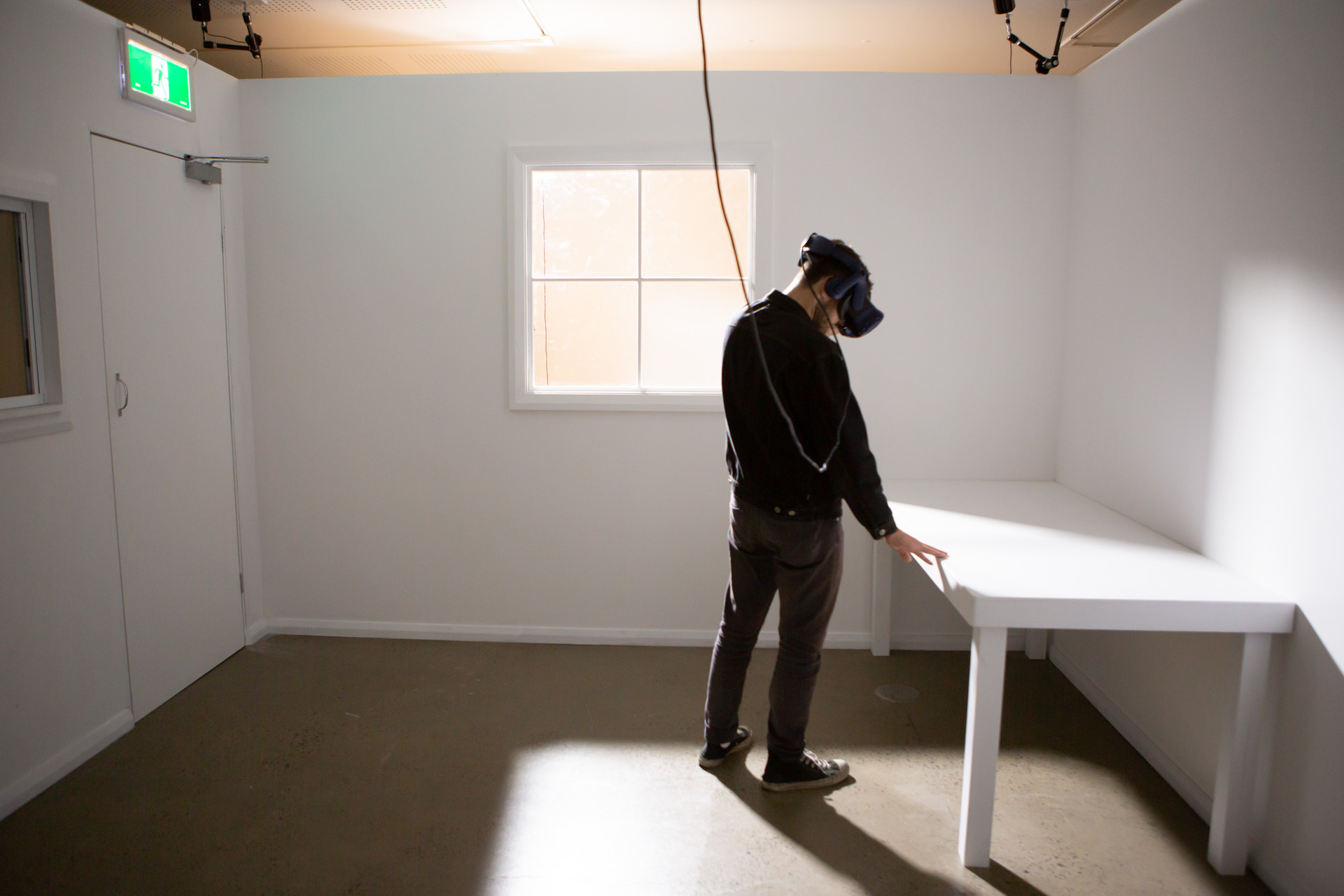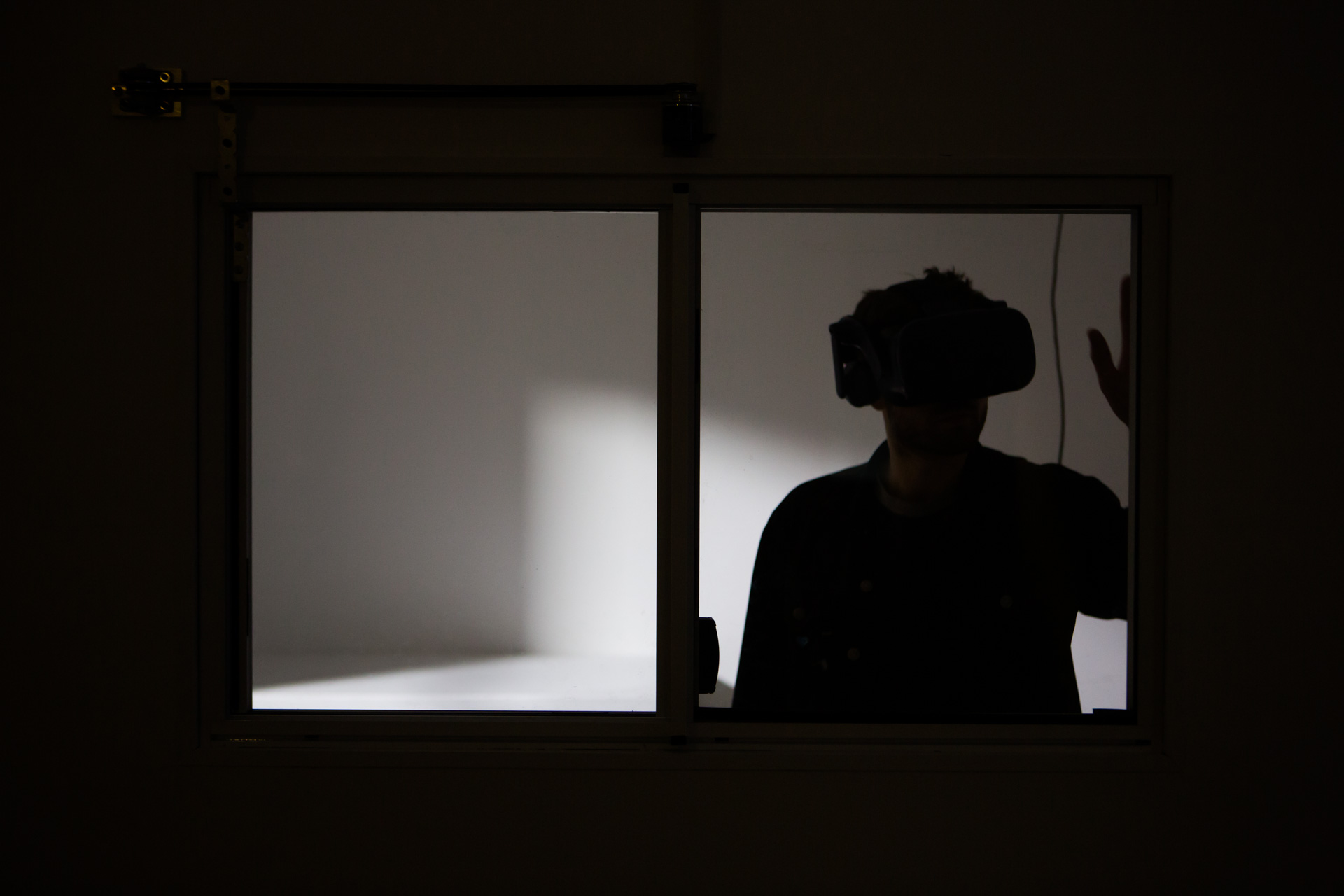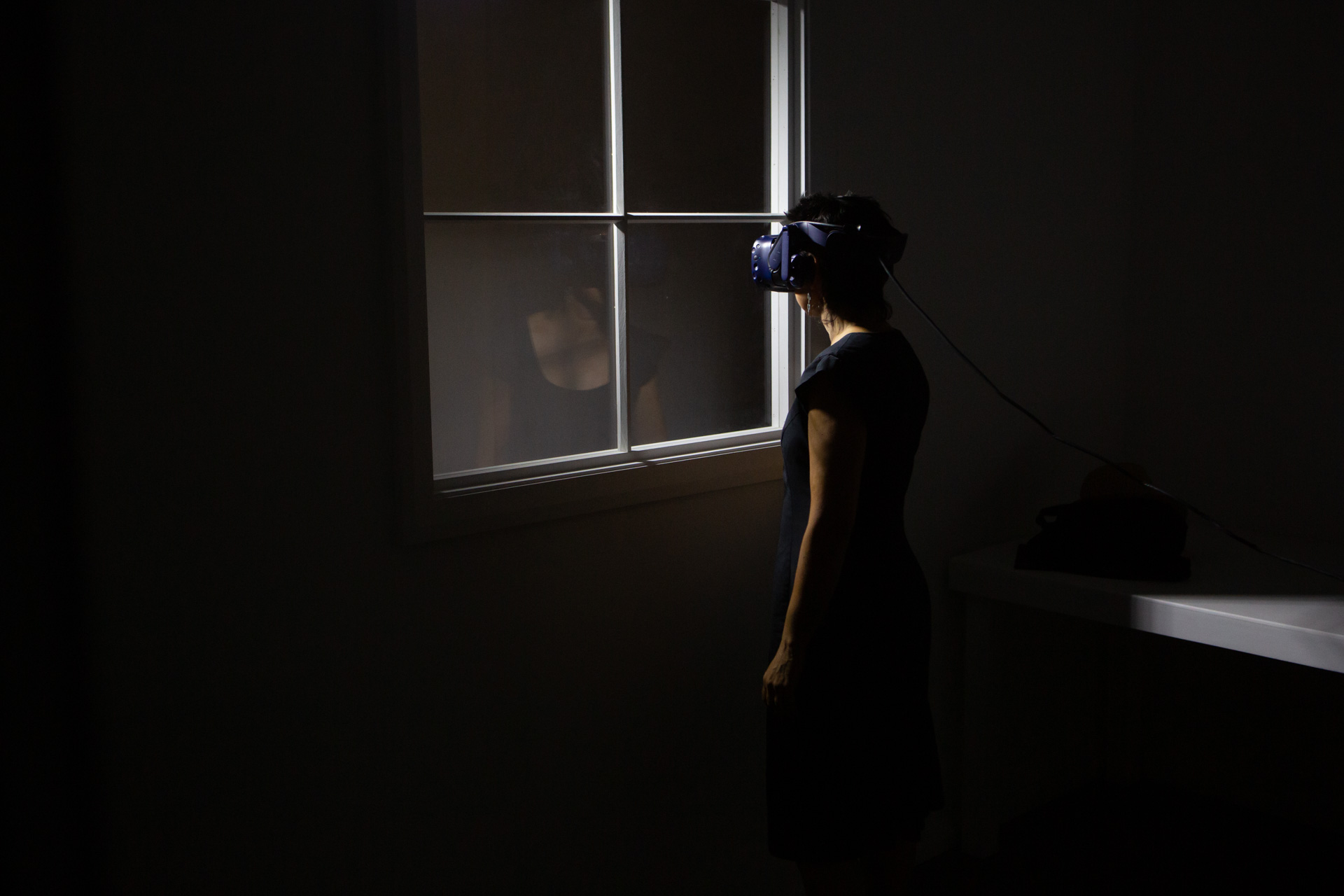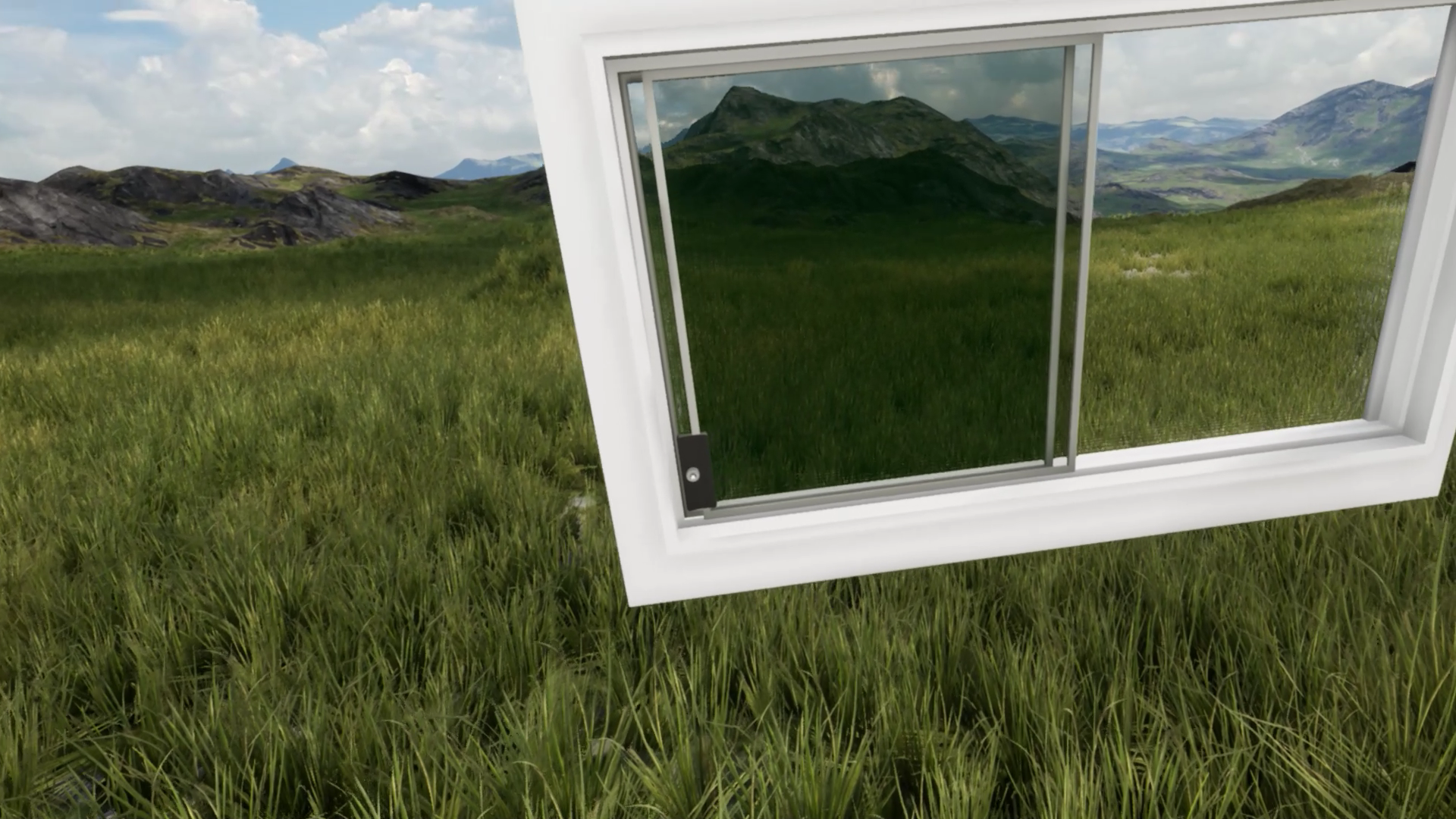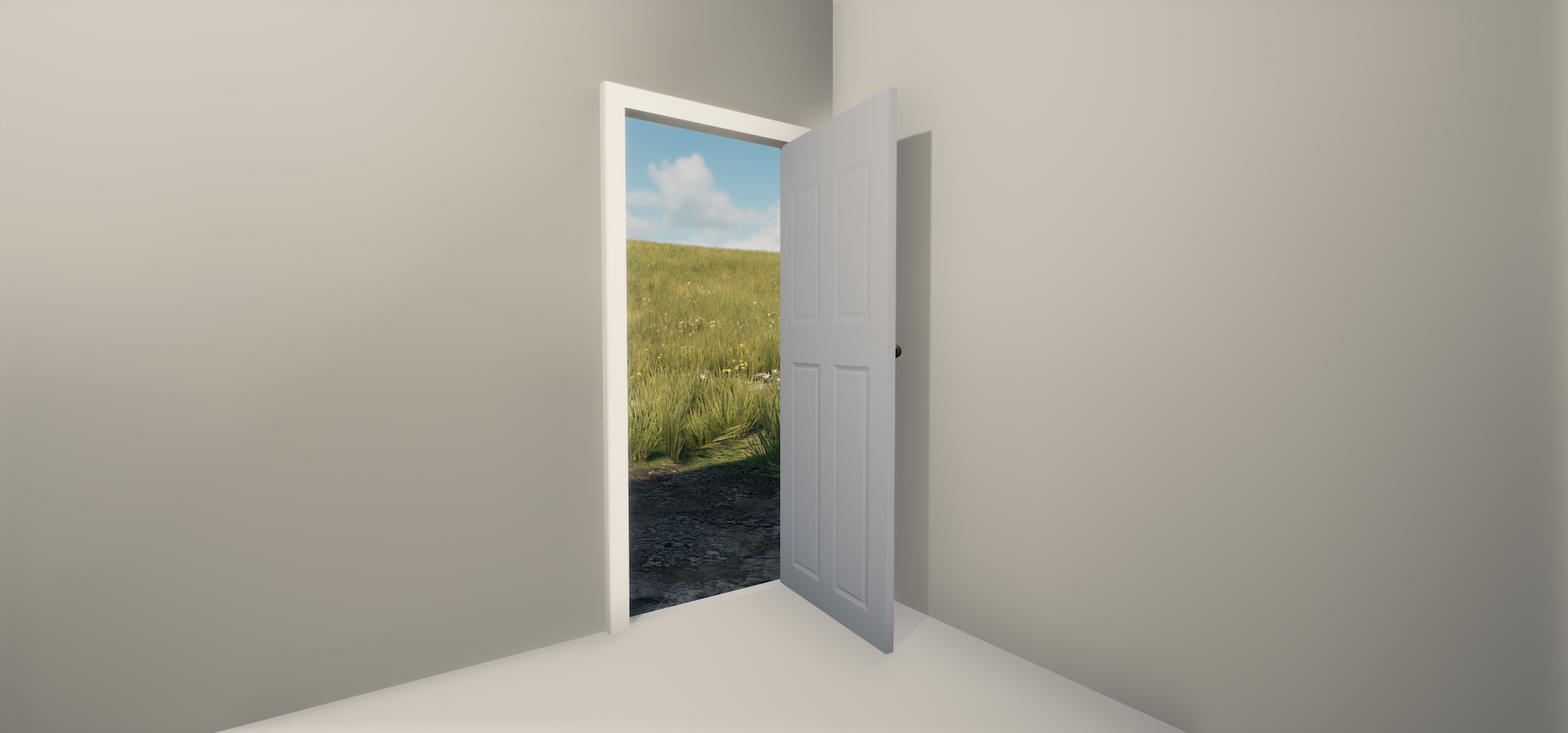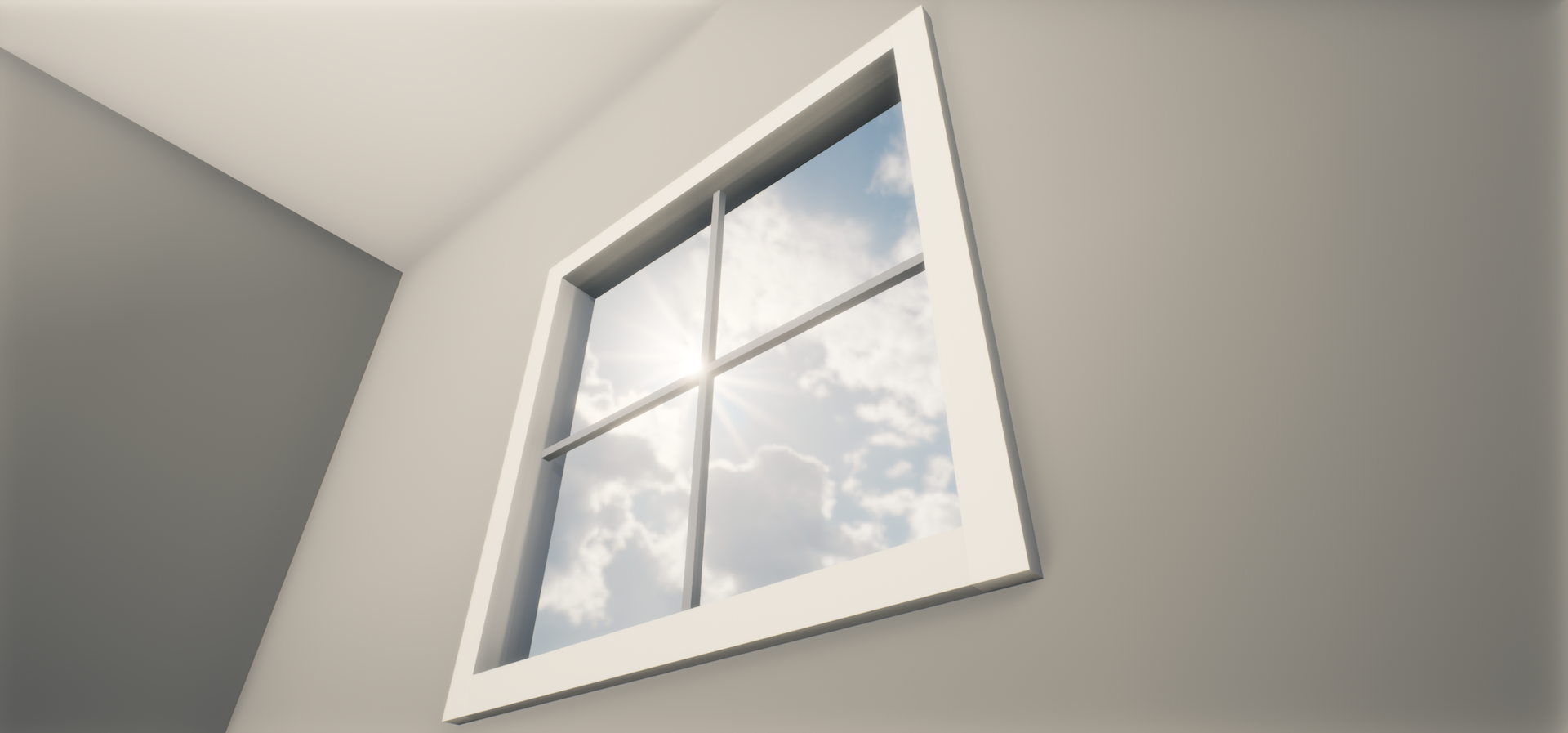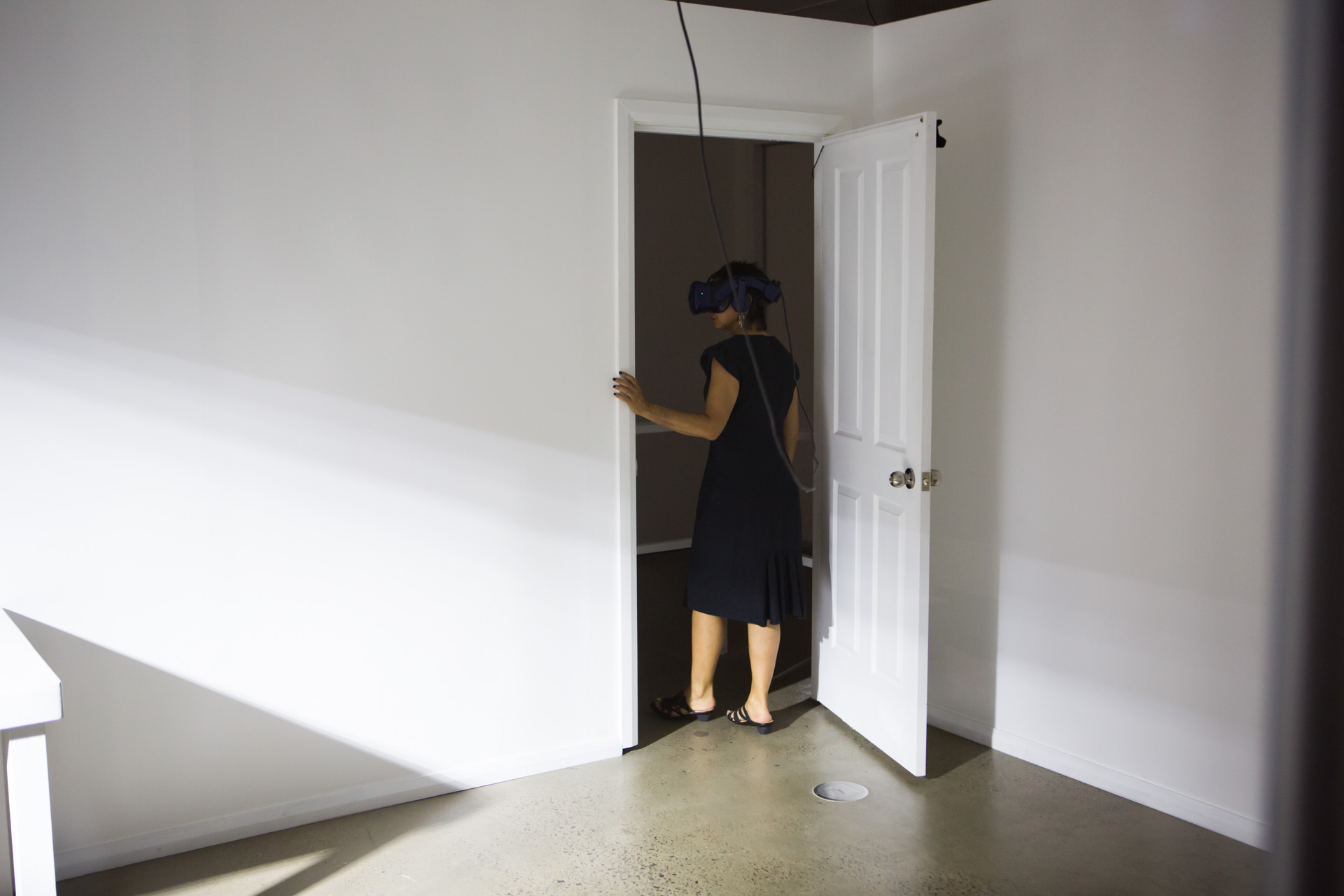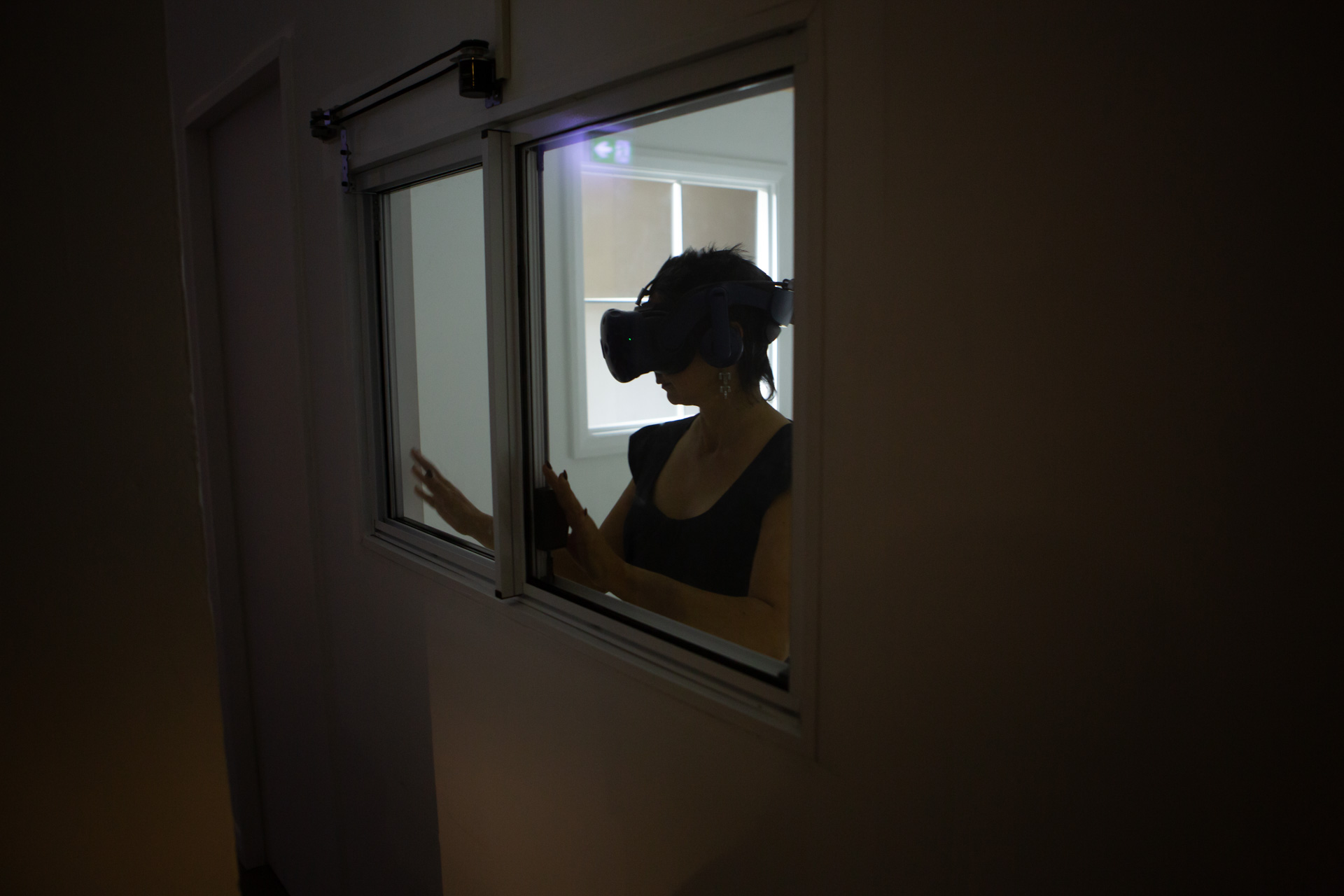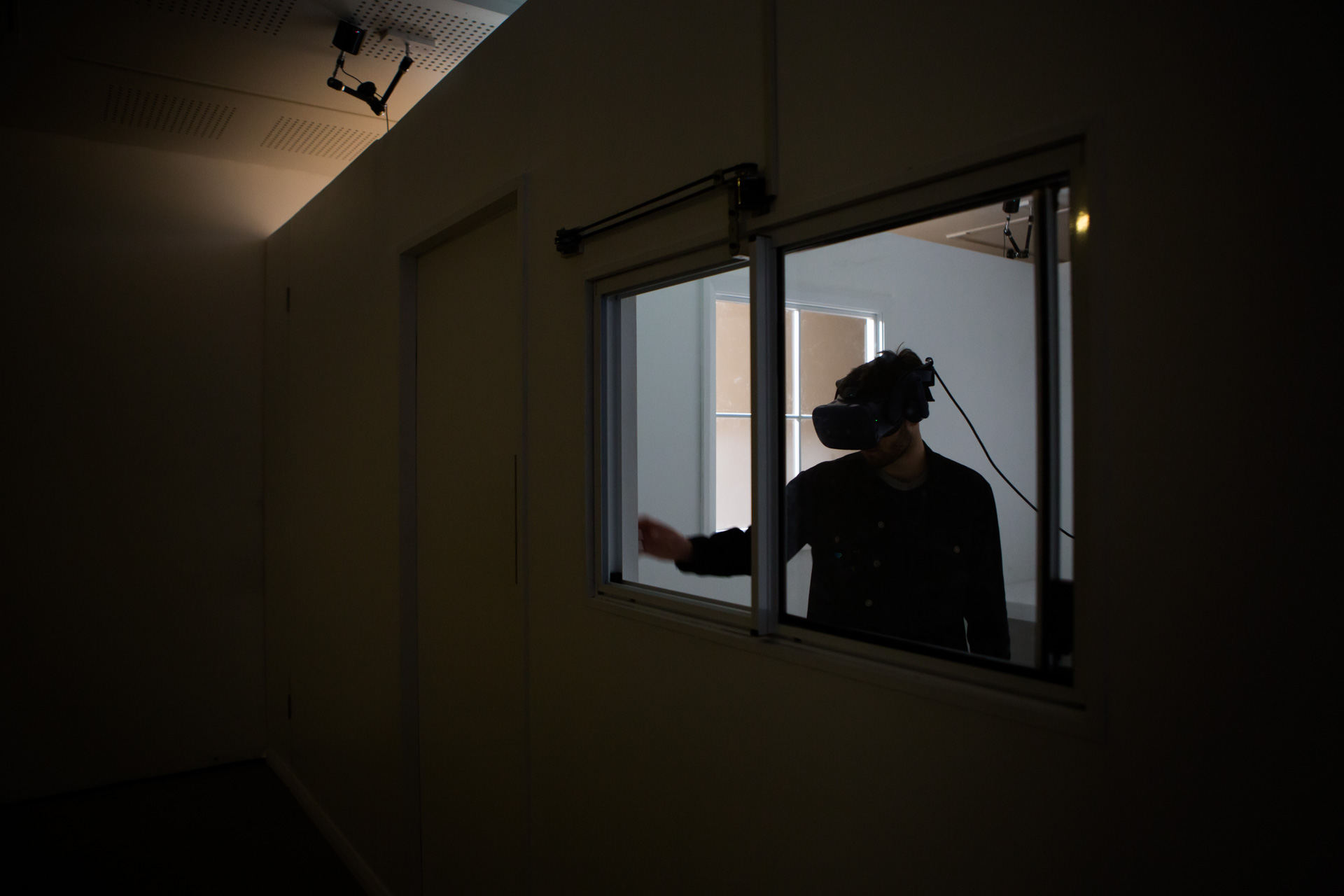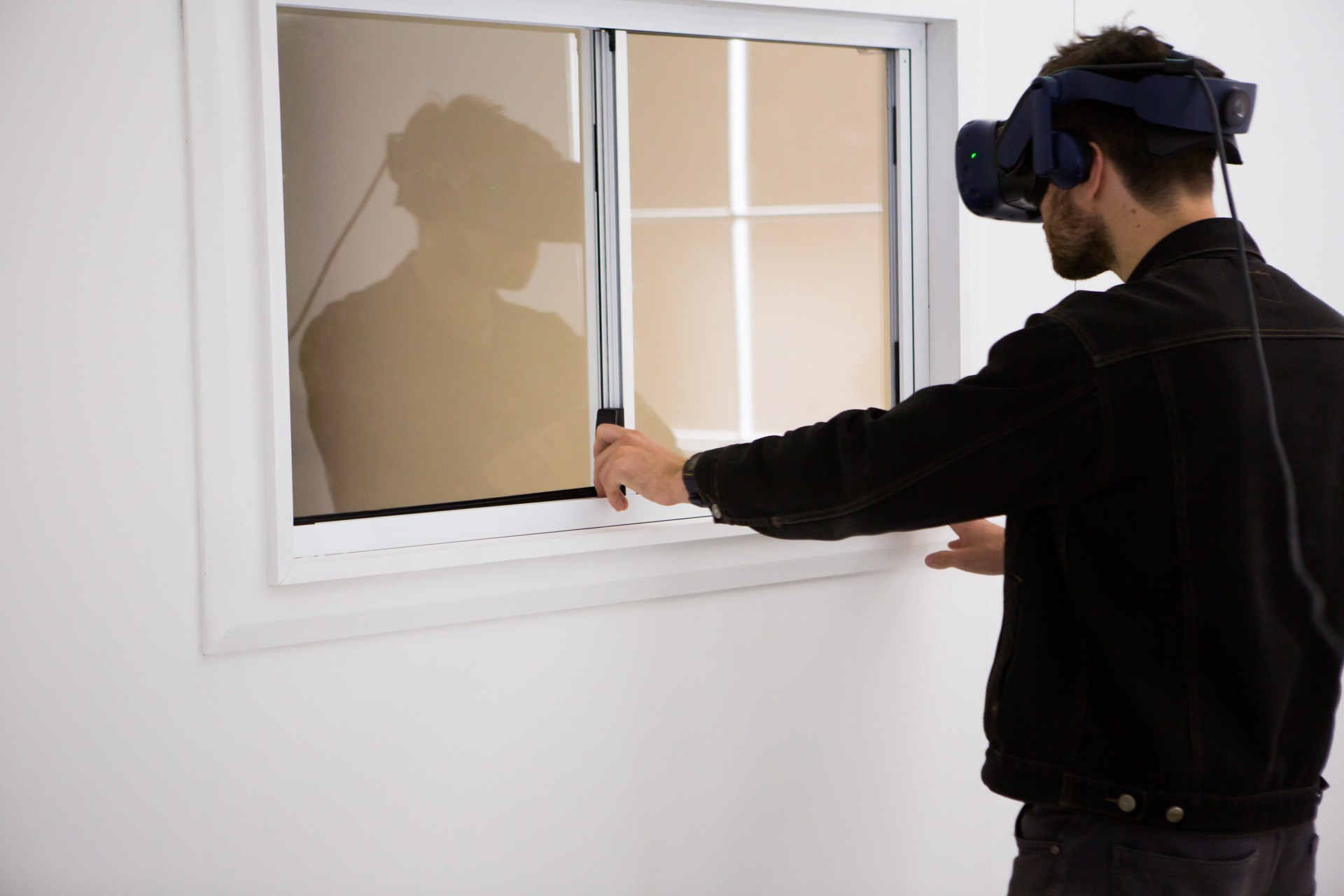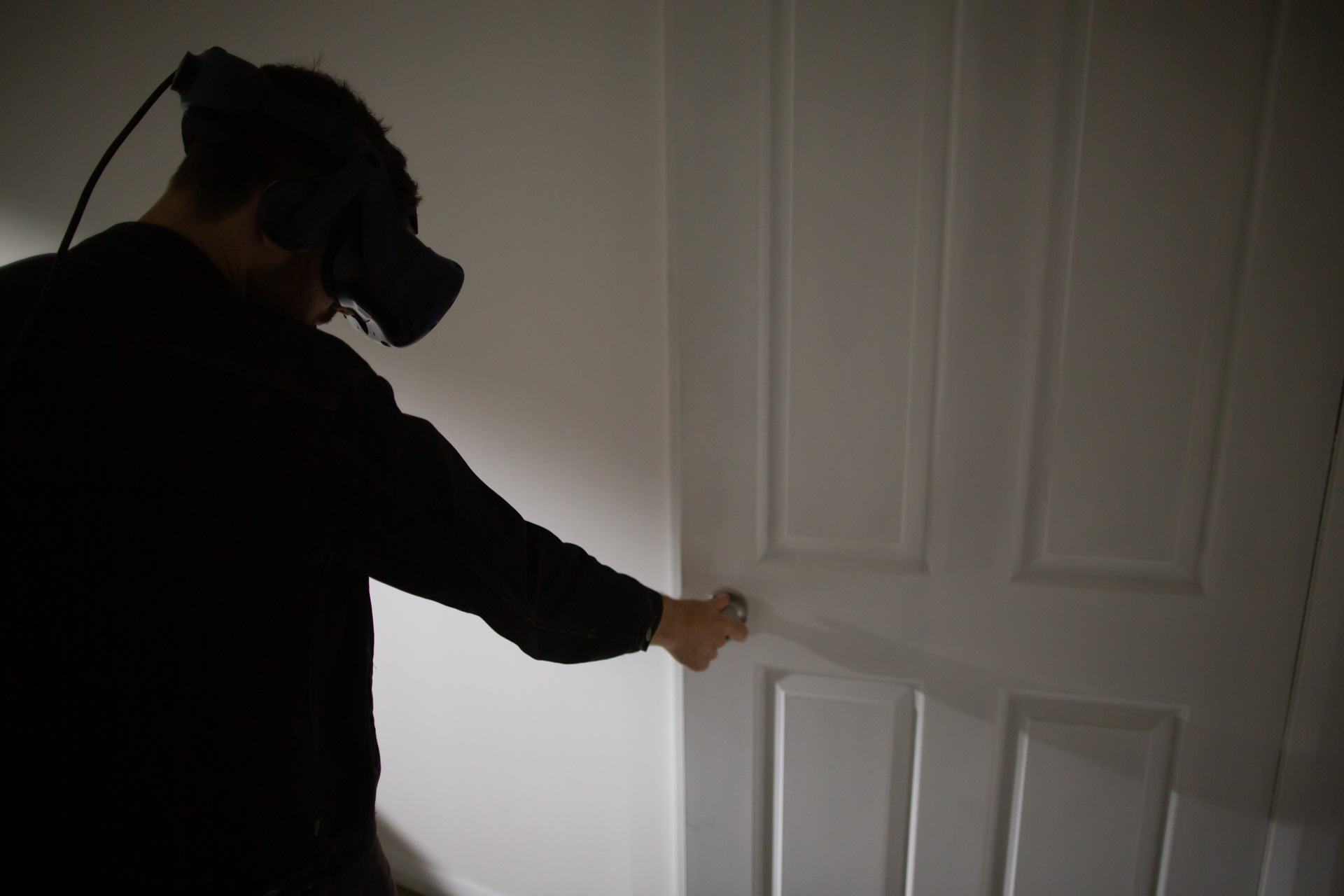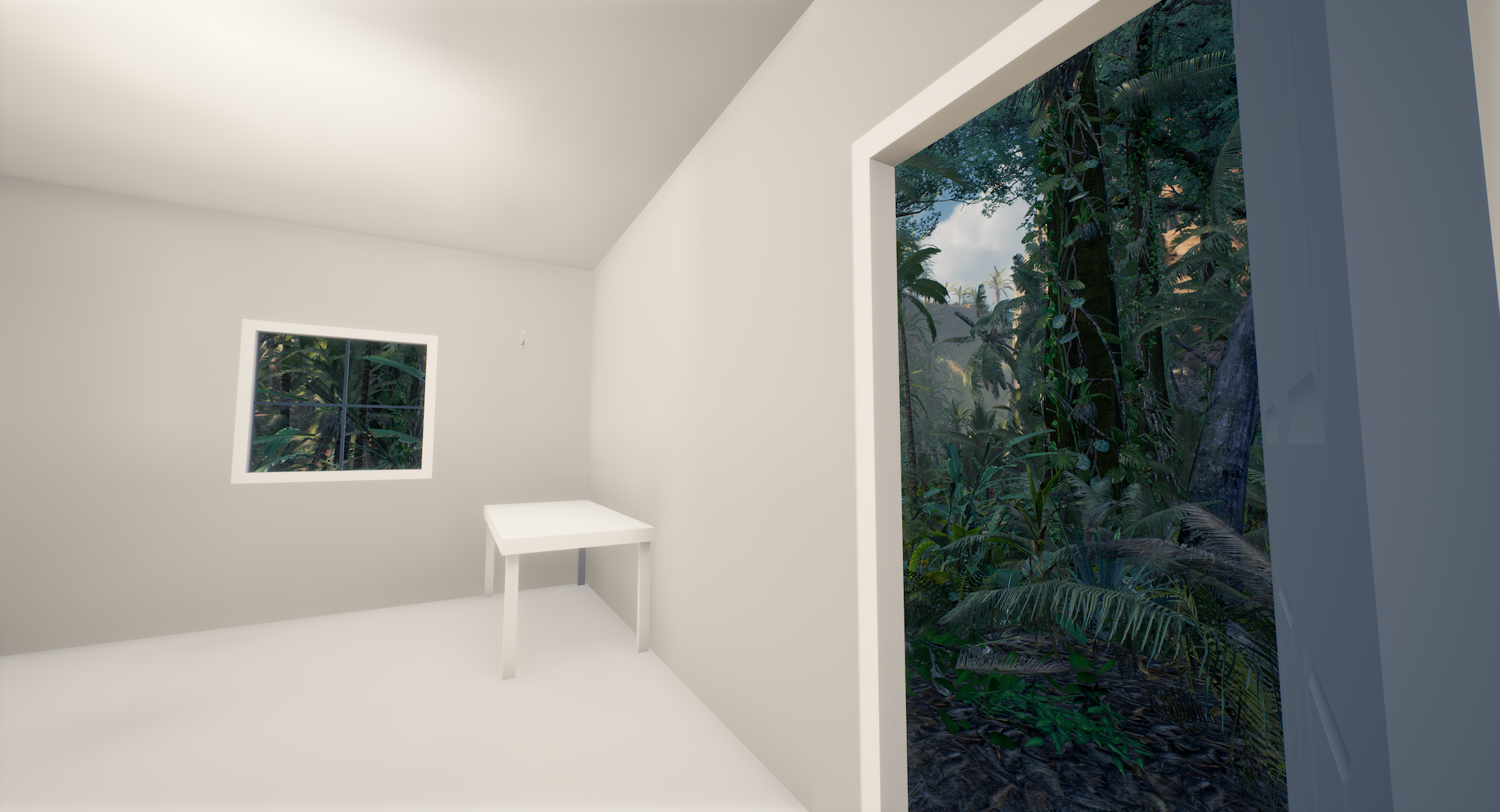Edge of the Present
Overview
Edge of the Present is a ‘mixed reality’ (virtual and physical) environment designed to cultivate future thinking. Inspired by neuropsychological research into the workings of memory and imagination, and made in collaboration with psychologists, mental health specialists and participants with lived experiences of suicide survival, this compelling immersive experience invites us to ‘invent the next ten minutes’
A physical room overlayed by a VR facsimile of the room is experienced via VR goggles. As a user interacts within the physical room, the VR facsimile enables dramatic, positive changes to occur as a result of that user’s actions/interactions/choices. These changes (eg. a door opens onto a beautiful vista) are accompanied by sensory reinforcement such as an enveloping breeze that intensify impact/positive experience. The user is ‘rewarded’ for their actions and sensitised to the positive effects of these.
Exhibitions
-
- The Big Anxiety, UNSW Galleries, Sydney Australia, 2019
Arts Centre Warburton, Victoria, Australia 2022
Youturn Maroochydore, Queensland, Australia 2022
Warwick Art Gallery, Queensland Australia 2022
HOTA, Surfers Paradise, Queensland, Australia 2022
- The Big Anxiety, UNSW Galleries, Sydney Australia, 2019
Credits
- Lead Artist: Alex Davies
- Artist/Psychologist: Michaela Davies
- Programming: Patrick Younis
- Technical Consultant: Soma CG
- Construction: Feather Edge
-
- Lead Artists: JR Brennan and Alex Davies
- Consultant: Ashley Dyer
- Programming: S1T2
- Collaborators: Alessandro Donagh-De Marchi and Faisal Sayani
- Engagement program: Stephanie Habak, Katherine Boydell
- Executive Producer: Jill Bennett
First Phase Research
Links
Text
Edge of the Present is comprised of rooms that visitors navigate while wearing virtual reality displays. Architectural features and objects in the environment correspond with forms in the virtual world, which have the capacity to dynamically evolve as the user progresses through physical space and the story. By using technology in this novel way, the installation helps viewers to better engage with the present moment – and hence with the future – with openness, curiosity, and confidence.
Depression/suicidality is characterised not only by excessive negative imagery but also by impoverished positive imagery (Pictet, Holmes et al), indicating a need for interventions that support cultivating positive images. VR technology may be effective for people who experience difficulty generating positive imagery of the future.
The development of a custom physical-VR environment provides a significant tool for supporting the cultivation of positive future thinking in relation to suicidal ideation/depression. Both experimental research and clinical therapy have shown that imagery-generating tasks increase generation of positive imagery and goal-directed behaviour (Raes; Holmes). Engaging in positive image generation leads to increases in positive mood/reduced negative mood (van Bentum, Holmes et al), and repeated imagery of positive scenarios decreases depressive symptoms and reduced interpretive negative bias (Torkan et al). Utilising VR has the potential to enhance this process. Edge of the Present offers a vivid embodied experience to enhance and intensify image generation with potential to bolster protective effects.
The physical-VR room in Edge of the Present provides a metaphor for the user’s internal world, and this world becomes enriched through the user’s exploration of the external world. As a result of the user’s engagement with the physical room, the VR facsimile of the room and mechanical devices enable positive changes to occur. As the user continues to engage, the internal world/room they inhabit becomes increasingly enriched with light and positive imagery. i.e. positive internal change occurs as a result of the user’s openness and curiosity, and the user is sensitised to the positive effects of this.
In this way Edge of the Present provokes a sense of hopeful anticipation- each time the door is opened there is a new landscape for the user to experience and incorporate into their personal world (the room). Through their (embodied) virtual explorations, the user learns both that openness and curiosity lead to positively reinforcing experiences, and that elements of these experiences/environments become integrated into the room they are inhabiting (i.e. enrich the internal world of the user).
The users experience is about being present, open and curious. A core aspect of mindfulness practice is maintaining contact with the present moment with openness and curiosity, and engaging fully with the here-and-now experience (Harris). This practice has been demonstrated to benefit people both mentally and physically (Harris). Edge of the Present facilitates this central skill of mindfulness practice through focussing attention to experience in the present moment (through dramatic VR imagery and sensory impacts) and reinforcing an attitude of openness and curiosity.
Most current VR experiences have difficulty enhancing sense of presence for users because users are only able to look around virtual environment from a fixed position, and do not physically interact with objects (Torisu). In Edge of the Present the user’s interactions with the virtual room (i.e. opening a door or window/touching a wall) have real physical counterparts. This embodied learning through the concurrent activation of motor neurons aims to strengthen these connections and increase sensitivity to the positive effects of the experience in a way that cannot be achieved via VR alone.
People often experience difficulties, or lack motivation to practice mindfulness. Edge of the Present provides an entry point for those who do not practice meditation or mindfulness to experience a sense of being fully present. Mindfulness practices train the mind to let go of distraction, to detach from thoughts, to simply be here and now. People who may not practice mindfulness/meditation but may engage with VR work may experience similar benefits.
Video
Project Details
DATE : 2019
MEDIUM : Virtual Reality & Physical Constuction
KEYWORDS : Mixed Reality
